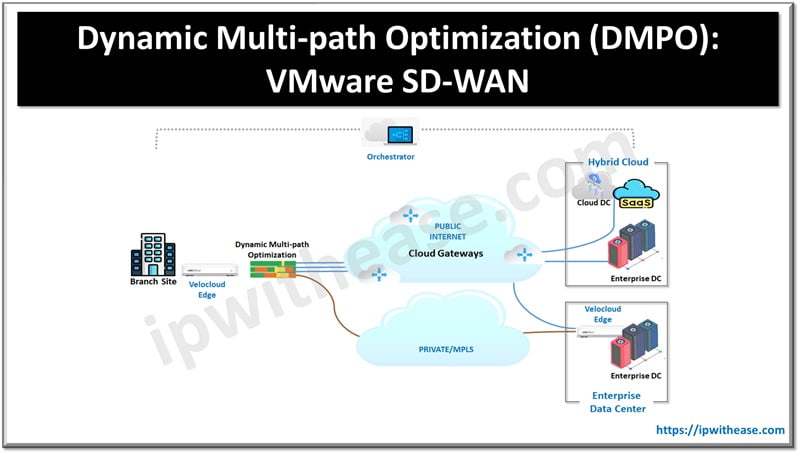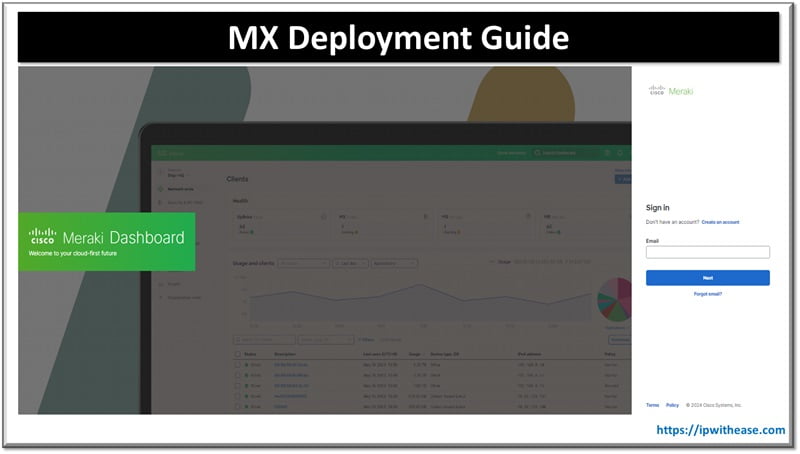Table of Contents
In earlier days network administrators struggled with balancing bandwidth requirements across networks for mission critical business applications such as SAP, ERP and so on. Major concerns revolved around latency, throughput, packet, and jitter which would prevent an application from running without any glitches and in an unobstructive manner. With the rapid penetration of cloud hosted computing infrastructure and SaaS applications this requirement is becoming more business critical. SD-WAN networks of the current era provide improved network performance with link monitoring and redirection of traffic and with dynamic multi-path optimization it facilitated enablement of application optimization routes.
Today we look more in detail how VMware Velocloud SD-WAN Dynamic Multi-path Optimization (DMPO) monitoring helps in maximization of bandwidth along with application performance, its features, use cases, its architecture etc.
VMware Velocloud SDWAN
The VMware Velocloud SD-WAN helps organizations in utilization of multiple WAN transports in simultaneous manner and maximize bandwidth along with ensuring application performance. It offers its benefits both for on premises and cloud applications (IaaS and SaaS). An overlay network comprising multiple tunnels is established to support monitoring and adaptation of real time changes in underlying WAN transports.
Dynamic Multi-path Optimization
VMWare Velocloud uses Dynamic Multi-path Optimization (DMPO) to achieve this. DMPO is used between all components of VMware SD-WAN to forward and process data traffic. VMware SD-WAN edge and VMware SD-WAN gateway act like DMPO endpoints. The edge establishes DMPO tunnels in between themselves. To connect to cloud-based SaaS applications DMPO tunnels are established with one or more gateways.

Functionalities of VMware SDWAN DMPO
- Supports continuous monitoring with automated recovery of bandwidth – Post establishing DMPO tunnel for WAN links it runs bandwidth test closest to gateway. Short burst of bi-directional traffic is sent to measure the received rate. It can detect the real public IP address of WAN link behind NAT or PAT. For private links, the branch edge establishes a DMPO channel with hub edges and performs bandwidth test procedures similar to those done for public links.
- Ongoing path monitoring – continuous and uni-directional measurement of loss, latency and jitter for packets is monitored on every tunnel between two DMPO points. Passive and active both monitoring approaches are applied. DMPO endpoints can identify lost and out of order packets with additional header information such as sequence number and timestamp. Performance metrics are communicated every 100 ms.
- MPLS (CoS) – Private link having CoS (Class of service agreement) can be configured to consider Cos into account in monitoring and steering application decisions
- Per packet steering with application awareness – DMPO detects later 0 to layer 7 traffic and can perform application aware steering based on laid down business policy configuration and link conditions in real time.
- DMPO can detect sudden outage in 300-500 ms and immediately start steering traffic flow for protection of application performance
- DMPO supports per packet load balancing and deliver all packets in single flow using all available links
- Correction for error and jitter – If steering is not possible to better link in case of single link deployments or multiple links down at same time DMPO provides error correction on WAN link issues. Real time applications like voice, streaming videos get benefit of Forward error correction (FEC) if there is loss of packet. Jitter buffer is enabled for real time applications and DMPO instructs to retransmit lost packets again to maximize TCP window during loss conditions
- Private or internal traffic is encrypted for both payloads; user traffic and tunnel header with IPsec transport mode end-to-end.
Typical use cases for DMPO
- Segregation of line of business: HR, engineering etc. for audit and security requirements
- Data separation of users: guest, PCI, corporate traffic etc.
- IP addresses used in VRFs are overlapping
Quick Tip!
VMware Velocloud has market share of 7.04% in software defined network
Continue Reading:
VMware Distributed Switch vs Standard Switch
VMWare NSX-T vs NSX-v: Comprehensive Comparison
ABOUT THE AUTHOR

You can learn more about her on her linkedin profile – Rashmi Bhardwaj



